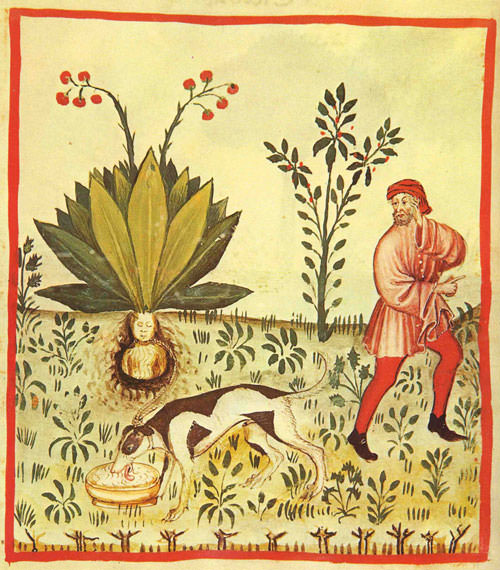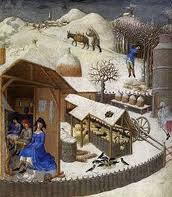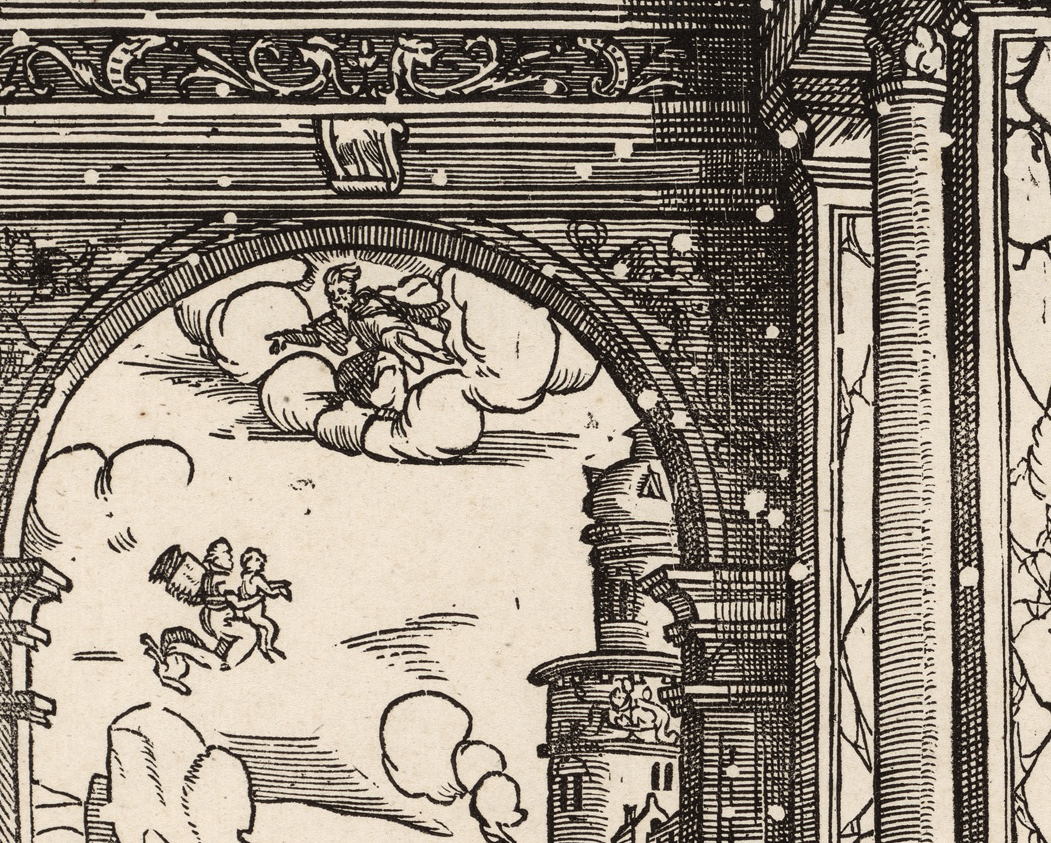The Medieval Metal Industry Was the Cradle of Modern Large-Scale Atmospheric Lead Pollution in Northern Europe
This study indicates that the contemporary atmospheric pollution climate in northern Europe was established in Medieval time, rather than in the Industrial period. Atmospheric lead pollution deposition did not, when seen in a historical perspective, increase as much as usually assumed with the Industrial Revolution (1800 A.D.).
Medieval Europeans and their Aquatic Ecosystems
Purposeful medieval fish-catching activities combined with unintended consequences of large-scale agricultural, urban, and commercial development during the Middle Ages to affect, separately and together, aquatic ecosystems and their component fish species in demonstrable ways.
The Devil’s Apples (Mandrakes)
The magic of the Mandrake grew with the passage of time. Elusive in its origins, where its associations lay with the age-long mysteries of love, its potency lingers on through the medicine of the Middle Ages
What did the Vikings ever do for us?
Well they were a lot more generous in their beach ownership laws, says Derek McGlashan
From the Persecuting to the Protective State? Jewish Expulsions and Weather Shocks from 1100 to 1800
Violence against Jews was caused by many factors, but we build on the common claim advanced by historians that Jews were convenient scape-goats for social and economic ills.
Medieval Irish chronicles reveal persistent volcanic forcing of severe winter cold events, 431–1649 CE
We present a uniquely long historical record of severe short-term cold events from Irish chronicles, 431–1649 CE, and test the association between cold event occurrence and explosive volcanism.
The Ecology and Economics of Medieval Deer Parks
There is a wealth of literature on a diversity of aspects of medieval parks, from their invertebrate ecologies, to rare lichens and bryophytes, to their herds of deer, their fishponds, and to the politics of fashion and taste and the provision of sport and entertainment for an affluent elite.
Feasting with Early Medieval Chiefs: Locating Political Action through Environmental Archaeology
This excellent paper was the first given in the session on Early Medieval Europe. It looked at various archaeological excavations in Iceland and Denmark and the political role feasting played in pre-Christian Viking societies.
Black Sun, High Flame, and Flood: Volcanic Hazards in Iceland
Iceland is one of the most volcanically active areas on earth, but were it not for the description of the end of the world in the poem Völuspá, one might think volcanic activity made little impression on Medieval Icelanders.
The Light was retreating before Darkness: Tales of the Witch hunt and climate change
Little by little, out of the old conviction —pagan and Christian— of evil interference in atmospheric phenomena evolved the belief that some people may use malign sorcery to set off whirlwinds hail, frosts, floods and other destructive weather events.
An Environmental History of the Middle Ages: The Crucible of Nature
John Aberth focuses his study on three key areas: the natural elements of air, water, and earth; the forest; and wild and domestic animals.
An Investigation Into the Use of Color As a Device to Convey Memes During The Little Ice Age
No single element in art drives emotion more effectively than color. The Greeks knew this and deliberately painted their marble works for the purpose of eliciting a reaction in the viewer.
Dark ages and dark areas: global deforestation in the deep past
The ‘darkness’ that envelopes the ages and areas of the forest of the past consists broadly of two elements. First, there are the problems intrinsic to forests as living ecosystems or entities. Many of these are still more or less uncertain and murky. Second, there are the difficulties of knowing what human activity took place.
The Sadness of the woods is bright: Deforestation and conservation in the Middle Ages
Middle Age and Renaissance poets and dramatists pictured the deserts and mountains as ugly, treacherous and inhospitable areas; forests as shadowy, wild places often inhabited by evil spirits, demons and witches, bestial creatures, wild men and beasts.
The Impact of Climate Change on Late Medieval English Culture
This thesis challenges the extremes of both environmental determinism and the modernist perspective that humanity exists in social and/or cultural isolation from the natural environment.
Greenland’s Viking settlers gorged on seals
A Danish-Canadian research team has demonstrated the Norse society did not die out due to an inability to adapt to the Greenlandic diet: an isotopic analysis of their bones shows they ate plenty of seals.
Environmental impact of the Baltic Crusades: deforestation, animal extinction, dogs no longer on the menu
A multidisciplinary project seeks to understand the environmental impact of the Baltic Crusades. Horses, for example, aided the Christians in battle, while the castles the Crusaders built decimated forests.
Medieval Cures from The Alphabet of Galen
Use green mint to stop hiccups, radish to relieve aching joints and donkey dung as toothpaste! Some medieval cures from the Alphabet of Galen, the pharmacy handbook of the Middle Ages.
Wormholes from centuries-old art prints reveal history
Wormholes reproduced in wood-printed illustrations dating back to the Middle Ages are offering researchers to track both the ecology of beetles and the spread of printing in Europe.
Hot Holiday Reads!
Put down those turkey left-overs and check out some of these hot holiday reads!
Catastrophe and Conspiracy: The evidence of the sixth century Byzantine sources for the AD 536 environmental event
Furthermore, as the historical record shows, the history of mankind did not end in 536 AD. To argue that the environmental event plunged the developed world into the Middle Ages is farfetched from a historical point of view.
Earliest historical records of typhoons in China
The typhoon as a weather phenomenon was frequently mentioned, described, and discussed in many works, including history books, poems and government documents, in the ninth century AD.
An Ecological History in the Middle Ages? Theoretical bases and sources
This article presents the possibilities offered of building a History, in this case of the Middle Ages, that considers the relations people have had with the natural spaces and ihe urban environment where their lives have developed.
The Mortal Sea: Fishing the Atlantic in the Age of Sail
W. Jeffrey Bolster takes us through a millennium-long environmental history of our impact on one of the largest ecosystems in the world.
The Disposal of Human Waste: A comparison between Ancient Rome and Medieval London
This essay examines the waste disposal options used in Ancient Rome and Medieval London, two cities that dealt with sewage in different ways.












